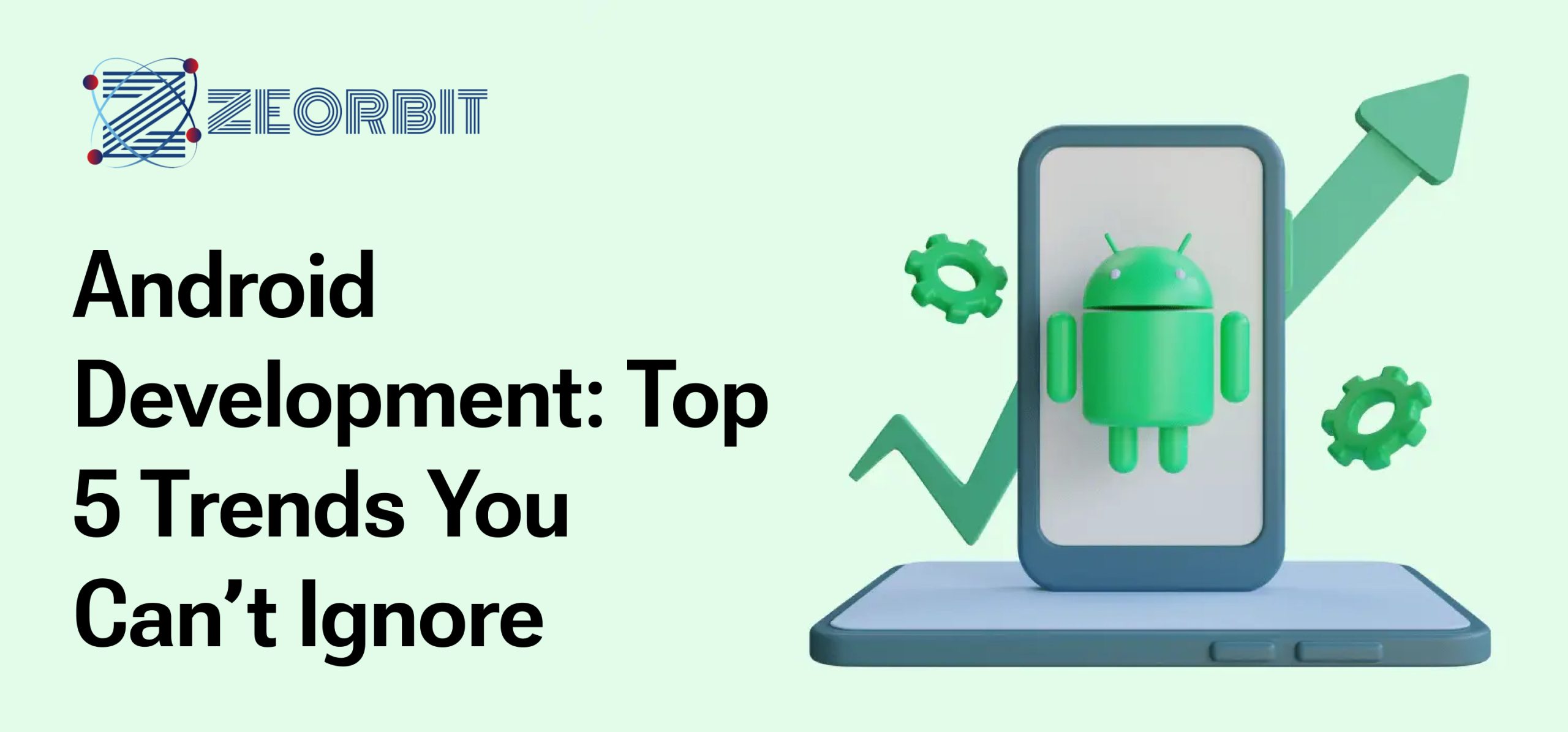Android Development: Top 5 Trends You Can’t Ignore
Android Development: Top 5 Trends You Can’t Ignore
The mobile landscape evolves at warp speed. Staying ahead means understanding the currents shaping Android development and adapting accordingly. Missing these trends risks falling behind the competition.
This guide explores the five most critical trends impacting Android development right now, offering actionable insights to future-proof your app strategy.
1. The Power of Kotlin: Beyond Java’s Shadow
Kotlin has firmly cemented its position as the preferred language for Android development. Its concise syntax, null safety features, and interoperability with Java make it a compelling choice.
- Faster Development Cycles: Kotlin reduces boilerplate code, accelerating development and testing.
- Improved App Quality: Null safety minimizes runtime errors and improves app stability.
- Enhanced Developer Satisfaction: Most importantly, developers enjoy working with Kotlin.
Although Java remains a valuable skill, Kotlin’s advantages are undeniable. New projects should strongly consider Kotlin. Refactoring existing Java codebases is also an increasingly common practice.
How to Integrate Kotlin into Your Project:
- Start Small: Begin by converting individual Java files to Kotlin.
- Focus on New Features: Implement new functionalities using Kotlin.
- Gradual Adoption: Gradually introduce Kotlin throughout the project.☏ 619-724-9517 | ✉️ info@zeorbit.com
2. Declarative UI with Jetpack Compose: A Paradigm Shift
Jetpack Compose is revolutionizing Android UI development. This modern toolkit enables building native UIs using a declarative approach.
Instead of manually manipulating views, developers describe what the UI should look like, and Compose handles the rendering.
- Simplified UI Development: Compose reduces complexity and improves code readability.
- Real-Time Previews: Compose offers real-time previews of UI changes, speeding up the design process.
- Improved Performance: Compose optimizes UI rendering for smoother performance.
Traditional XML-based layouts are becoming less common. Jetpack Compose allows for more dynamic and interactive UI experiences.
Why Choose Jetpack Compose?
- Faster iterations: Quickly prototype and iterate on UI designs.
- Less code: Write less code compared to traditional XML layouts.
- More maintainable code: Easier to understand and maintain UI code.
3. AI and Machine Learning: Smarter Apps, Personalized Experiences
Artificial intelligence (AI) and machine learning (ML) are no longer futuristic concepts. They’re integral components of modern Android applications.
Apps are now incorporating AI/ML for:
- Personalized Recommendations: Suggesting relevant content, products, and services.
- Image Recognition and Processing: Identifying objects, faces, and scenes in images.
- Natural Language Processing: Understanding and responding to user input.
- Fraud Detection: Analyzing patterns to identify and prevent fraudulent activity.
Implementing AI/ML in Your Android App:
- TensorFlow Lite: A lightweight framework for deploying ML models on mobile devices.
- Firebase ML: A cloud-based ML platform that simplifies the process of building and deploying ML models.
- Third-Party APIs: Integrate with existing AI/ML services like Google Cloud AI Platform or Amazon SageMaker.
4. The Rise of Foldables and Large Screen Devices: Adapting to New Form Factors
Foldable phones and tablets are reshaping the mobile landscape. Developers need to optimize their apps for these larger, more versatile screens.
Ignoring this trend means missing out on a growing market segment.
- Adaptive Layouts: Design layouts that adapt seamlessly to different screen sizes and orientations.
- Multi-Window Support: Enable apps to run efficiently in multi-window mode.
- Drag-and-Drop Functionality: Implement drag-and-drop functionality for improved productivity.
- Testing Across Devices: Thoroughly test apps on different foldable devices and tablets.
Key Considerations for Foldable and Large Screen Development:
- Screen Continuity: Ensure a smooth transition when switching between folded and unfolded states.
- Optimized User Interface: Design UIs that take advantage of the larger screen real estate.
- Input Methods: Support different input methods, such as touch, stylus, and keyboard.☏ 619-7249517 | ✉️ info@zeorbit.com
5. Enhanced Security and Privacy: Protecting User Data
Security and privacy are paramount. Users are increasingly aware of how their data is collected and used. Developers must prioritize security best practices to build trust and protect user information.
- Data Encryption: Encrypt sensitive data both in transit and at rest.
- Runtime Permissions: Request permissions only when necessary and explain why they are needed.
- Secure Authentication: Implement strong authentication mechanisms, such as two-factor authentication.
- Regular Security Audits: Conduct regular security audits to identify and address vulnerabilities.
- Stay Updated: Keep up with the latest security patches and updates.
Implementing Robust Security Measures:
- Android Security Best Practices: Follow the official Android security guidelines.
- OWASP Mobile Security Project: Leverage the OWASP Mobile Security Project for guidance on mobile security best practices.
- Third-Party Security Tools: Use security tools to scan your app for vulnerabilities.
FAQs
- Is Java still relevant for Android development?Yes, Java remains relevant, particularly for maintaining existing codebases. However, Kotlin is the preferred language for new projects.
- How can I learn Jetpack Compose?Google provides extensive documentation, tutorials, and code samples for Jetpack Compose. Online courses and workshops are also available.
- What are the best practices for securing Android apps?
- Use data encryption.
- Request permissions responsibly.
- Implement secure authentication.
- Conduct regular security audits.
How-Tos
- How to convert a Java file to Kotlin:
- Open the Java file in Android Studio.
- Select Code > Convert Java File to Kotlin File.
- Address any compilation errors.
- How to add Jetpack Compose to an existing project:
- Add the necessary dependencies to your
build.gradlefile. - Enable Compose in your project’s settings.
- Start building your UI using Compose composables.
- Add the necessary dependencies to your
By embracing these five trends, you can position your Android development efforts for success. From leveraging the power of Kotlin and Jetpack Compose to integrating AI/ML and optimizing for new form factors, these trends will shape the future of Android development. Always prioritize user security and privacy. Staying informed and adapting to these changes is crucial for delivering exceptional user experiences.


![The Ultimate Guide to Mobile App Development in [Your Industry]](https://zeorbit.com/wp-content/uploads/2025/07/g66655c0685b6770fdf282b7630fb53d5a098bdf07945533a51019f3a7ddbbc650790fae7837cfd4b9c9c785863069efdb2b0e4a8ec7870f8a1b85dbeacbb221e_1280-150x150.jpg)